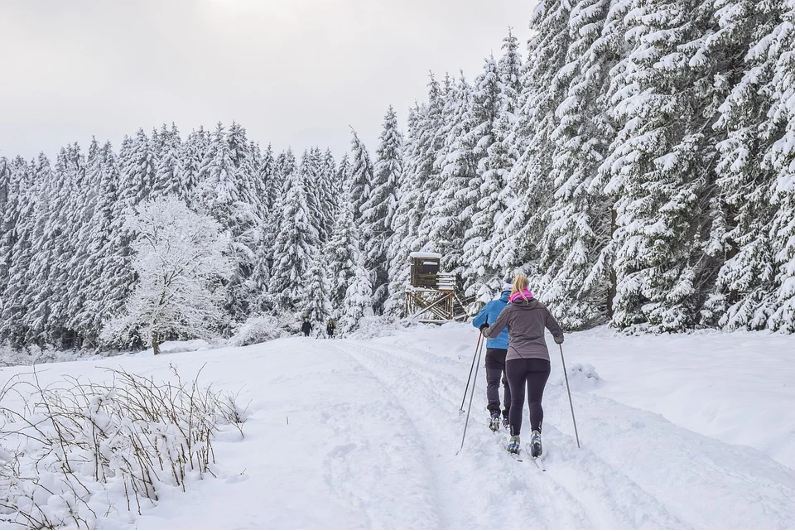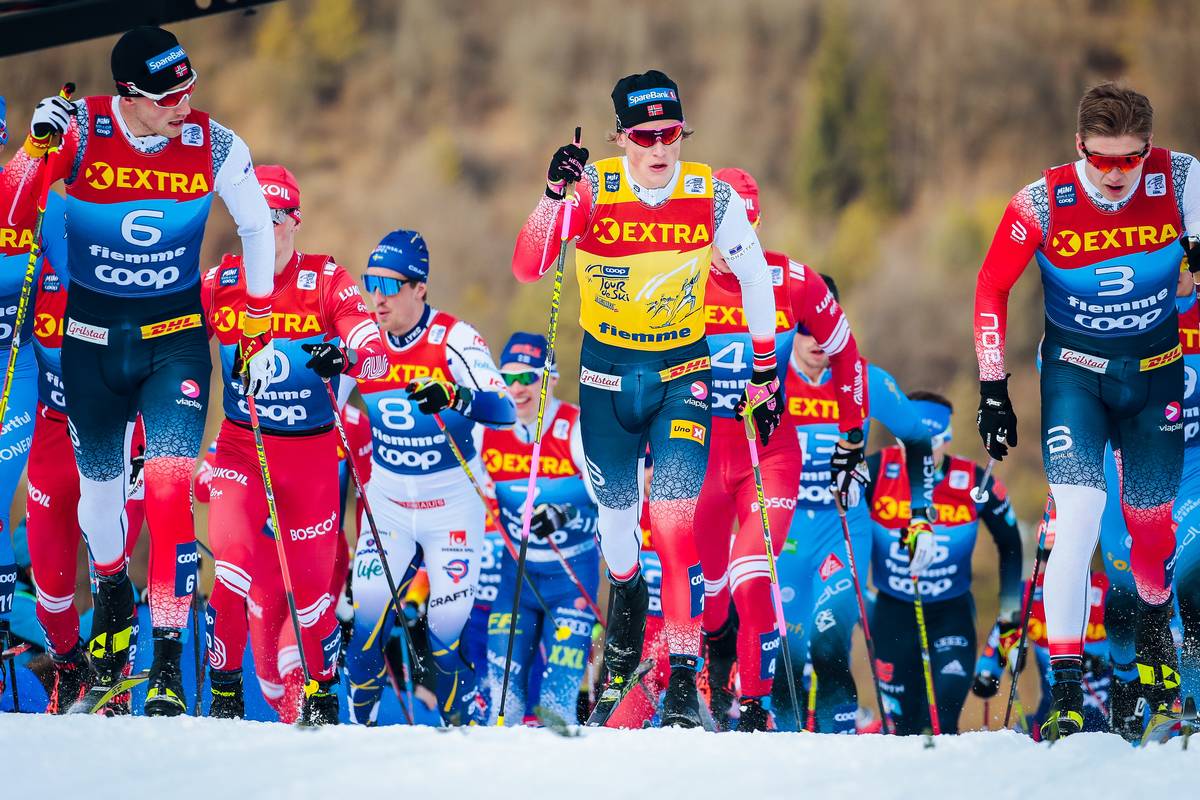Skiing is one of the best activities you can engage in, as it can boost your physical, mental, and emotional well-being. It also helps strengthen the knees, joints, and muscles, which is beneficial for preventing injuries later in life. That said, you need to prepare well to get the most out of the experience, especially if you are engaging in this sport for the first time.
Besides getting in shape to prepare your body and ensuring you have quality equipment, you also need to select your skiing apparel carefully. Otherwise, you might get stuck on a snowy mountain wearing cold, damp, and downright uncomfortable clothes. Make sure you can focus on the fun and relish this new experience by planning your outfits to a T.
Don’t know where to start? Read on. This piece will discuss must-have clothing pieces to keep you warm, dry, and comfy on your first ski trip. To better help you out, we have categorized these items into a three-layer system (base, middle, and outer layers) and included necessary accessories to help you create ski outfits suitable for the demands of the sport without cramping your style.
Base Layer
You may be outdoors in below-zero temperatures, but your body will still sweat because skiing is a strenuous activity akin to cycling or rowing. That is why you need a base or innermost layer that draws sweat or moisture off your skin to keep you dry and can trap heat at the same time. Tight-fitting tops and bottoms or one-piece garments made of moisture-wicking fabrics like wool and nylon are your best bet.
Sure, you can invest in a high-quality, moisture-wicking thermal underwear set, but long-sleeve compression t-shirts and athletic leggings for women are good options as well. Try looking through your workout wardrobe to find something suitable. Remember, your base layer’s primary function is to keep you dry, so always opt for breathable, quick-drying, and snug-fitting pieces that provide coverage from neck to ankle.
Middle Layer
If the base layer is for keeping you dry, the middle layer is for insulation—to retain and trap heat. As such, you want slightly heavier pieces than your innermost layer to keep you warm and comfy despite the freezing weather. Do you have a down jacket, fleece sweatshirt, or wool sweater in your closet? If so, you are all set. But if you want to find the ideal insulating layer, here are several factors you may want to consider:
- Fabric. Avoid garments made of cotton because this material absorbs moisture and readily loses its insulating capacity when wet. Instead, opt for fabrics that dry quickly and retain heat effectively, such as fleece and wool.
- Fit. While you can choose the fit according to your preference, make sure you find garments that are neither too tight nor too loose. These pieces should fit comfortably between the base and outer layers and should not restrict your movement.
- Remember to check the weather forecast to find the most suitable mid-layering garments. For instance, if the temperature is too low, you may want to wear the warmest down best winter jacket or wool sweater you have. You can also opt to wear several middle layers so you can easily take a few off if the temperature climbs.
It is worth noting that most skiers do not wear any mid-layer garments on their legs because skiing is usually enough to warm the legs up. But if your legs tend to get cold easily, you can wear insulated pants or thicker leggings.
Outer Layer
The outer or shell layer protects you from environmental elements like snow, wind, and rain so that you can enjoy your skiing adventure to the fullest. Essentially, you are looking for waterproof, windproof, and breathable ski jackets and pants to help you stay dry and keep sweat and moisture out.
When searching for the perfect outer layer, pay attention to the waterproof and breathability ratings. Opt for ski jackets and trousers with a high waterproof rating (over 10k mm) and a high breathability rating (over 8k mm) as they work well in practically all weather conditions. But if you are skiing in areas with no rain or wet snow, you can also choose a soft shell jacket.
Must-Have Ski Accessories
Aside from preparing the layering pieces mentioned above, you also need to invest in a couple of ski essentials to keep you dry, warm, comfy, and safe. From helmets and goggles to gloves and ski socks, here are some essential ski accessories:
Ski Helmet
While wearing a ski helmet is not mandatory, it is more sensible for a newbie skier like you to wear one to reduce the risk of head injury. Falling, collisions with trees and poles, and similar skiing accidents are especially common for beginners as they try to learn the ropes. When shopping for ski helmets, make sure that the item you are eyeing fits your head snugly, protects your forehead and back of the head, and has a sticker with the code ASTM F2040 or CE EN 1077 to ensure that the helmet has passed safety standards.
Anti-Fog Goggles
To protect your eyes from the wind, snow, and glare of sunlight without disturbing your vision, a pair of high-quality anti-fog goggles is another must-have. Find a well-fitted pair that matches your ski helmet and complements your face shape. Do you wear prescription glasses? If so, make sure that you can comfortably wear your glasses underneath the goggles.
Neck Gaiter
Instead of a long, bulky scarf that can easily get caught on the ski lift, trees, or poles, opt for a neck gaiter to keep your neck and face warm when the temperature is at its coldest. Given the numerous options available on the market, you may want to consider the following factors:
- As with other ski garments, the type of material matters significantly when choosing the perfect neck gaiter. Fleece, merino wool, or a synthetic blend are great options as they are soft, warm, breathable, and quick-drying.
- Fit. Try a couple of neck gaiters before buying one to ensure that they fit and hug your neck comfortably—not too loose or too tight. You may also want to purchase an extra-long neck gaiter so that you can readily pull it up to cover half your face when it becomes too cold.
- Color. Although the color of your gaiter may not affect your skiing performance, it can impact your mood and emotions. So, be sure to choose a neck warmer in a shade and style that makes you look and feel good.
Ski Gloves
Keeping your hands dry and warm is essential to enjoying your skiing adventure and preventing health issues. As such, you should wear waterproof, moisture-wicking, and insulated ski gloves. If you like taking pictures, texting, or scrolling through your social media feed, choose a pair made with synthetic leather or that has touchscreen capacity so you can use your mobile phone while wearing them.
Ski Socks
Your athletic cotton socks may seem warm and comfy, but they are not suitable for skiing. Cotton locks moisture in and may even cause poor blood circulation and painful trench foot. Keep your sports socks at home and look for wool or synthetic knee-high ski socks to keep your feet toasty warm, dry, and comfortable all day.
It is worth stressing that the key to creating the best skiing outfits is observing a good layering system. You should carefully select inner garments to keep you dry, middle pieces to stay warm, and outer clothes to protect you from wind, snow, and rain. Remember that each layer complements the other and is necessary to keep you warm and comfortable amidst subzero temperatures. So, keep the pointers discussed here to heart to make your first skiing experience enjoyable and memorable.




